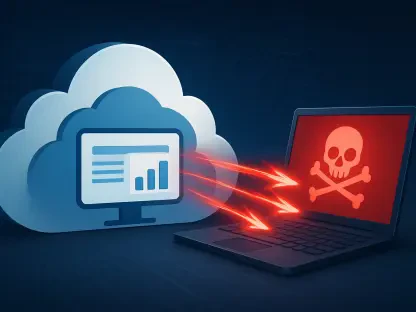A new trend is shaking up the cybersecurity landscape, with the rise of sophisticated phishing-as-a-service (PhaaS) platforms revolutionizing how cybercriminals operate. These services offer comprehensive, turnkey phishing solutions that are now easily accessible to even the least technically skilled individuals. Such developments are raising alarms among security professionals as they foresee a noteworthy increase in phishing attacks targeting unsuspecting victims. The underground world of cybercrime has now become more approachable, empowering a controversial new generation of attackers with readily available tools.
A Deep Dive into Phishing-as-a-Service Platforms
Emerging from the shadows, phishing-as-a-service platforms position themselves as a highly lucrative business model within cybercriminal circles. They provide pre-packaged kits that encompass everything an aspiring attacker might need to conduct successful phishing campaigns. This model is built upon the same principles that drive legitimate software-as-a-service platforms—easy access, regular updates, and extensive support. The true danger lies in lowering the entry barrier for potential intruders who can launch targeted campaigns without possessing advanced technical skills. Further illustrating the growing appeal, these platforms are becoming increasingly relevant as they adapt to changes within the broader threat landscape. The potential for these services to exploit vulnerabilities in enterprise and personal security systems has expanded dramatically.
In-Depth Examination of PhaaS Features
Enhanced Phishing Tools with Simple Accessibility
Turnkey phishing tools are at the forefront of this PhaaS revolution, providing users with plug-and-play capabilities that effectively automate the once complex processes of credential theft. These tools simplify the execution of phishing attacks, offering a user-friendly interface that allows for the setup and management of campaigns with minimal effort. The ease of use inherent in these platforms makes them particularly attractive, appealing to criminals regardless of their technical expertise. This accessibility has facilitated an increase in spear-phishing attempts, posing a medium to high-level threat to individuals and organizations alike.
Prioritizing the Customer Experience
The customer-centric approach of these platforms is another significant departure from traditional phishing techniques. By focusing on user engagement, PhaaS providers ensure that even amateur attackers feel supported and understood. This leads to a higher success rate for phishing campaigns, as users receive continuous guidance and support through various communication channels, such as Telegram. This emphasis on customer satisfaction echoes strategies employed by some legitimate businesses, making phishing-as-a-service immensely appealing to a broad demographic of cybercriminals.
Current Landscape and Releases
Today’s PhaaS platforms are constantly evolving, with automation at the center of many emerging trends. By integrating automation, platforms drastically reduce the time and resources required to carry out attacks while increasing efficiency. Moreover, the shift to a SaaS-inspired model exemplifies the professionalization of cybercrime, with services offering comprehensive ecosystems that support everything from campaign setup to data analysis. User behavior has adapted accordingly, as attackers increasingly target more sophisticated and resistant networks by leveraging social engineering techniques. This shift is reflective of a broader trend in cybercrime where community building and peer support enhance the effectiveness of phishing endeavors.
Real-World Impact and Case Studies
PhaaS platforms have a pronounced effect on numerous industry sectors, especially those that manage sensitive data. Financial, healthcare, and technology sectors are particularly vulnerable due to the highly confidential information they harbor. A notable spike in phishing attacks is registered in these domains, with attackers aggressively exploiting weak security systems to access valuable data. This trend underscores the pressing necessity for organizations to bolster their defenses against such threats, as the ramifications for those targeted can be severe.
Addressing Challenges and Restrictive Hurdles
Despite their successes, PhaaS platforms encounter obstacles both technical and regulatory. As law enforcement agencies and cybersecurity firms strengthen their fight against these activities, PhaaS providers must adapt quickly. Developers are continually pressured to outsmart advanced security systems installed by organizations, which poses an ongoing challenge. Efforts to halt the expansion of these services are underway, with security professionals relentlessly working on sealing potential entry points and increasing awareness about these threats.
Future Prospects and Industry Insights
Looking toward the future, the trajectory of PhaaS platforms promises further innovations with significant implications for corporate and personal security. As technological advancements continue, it is likely that PhaaS solutions will see a rise in sophistication, making them harder to detect and neutralize. Such progress suggests the possibility of more integrated attacks that require comprehensive cybersecurity frameworks for effective prevention. Organizations must remain vigilant, constantly adjusting and updating their defensive measures to anticipate potential breakthroughs within this rapidly evolving landscape.
In retrospect, the surge of phishing-as-a-service platforms has marked a pivotal moment in cybercrime history. These ready-to-use kits are leading to a democratization of criminal tactics, making them more accessible to novice attackers. The consequences of this shift necessitate an immediate reevaluation of current security measures to address mounting threats. As security practitioners work tirelessly to stay one step ahead, new frontiers in attack prevention and response strategies will continue to transform the cybersecurity landscape. Understanding and mitigating these threats form an integral component of digital defense tactics moving forward.









